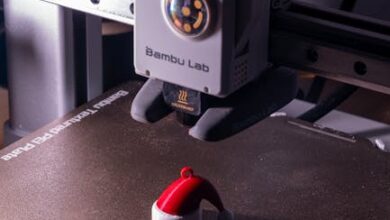The Hidden Cost of “Just Flaky” Tests

Every engineering team knows the feeling: that dreaded red build in your CI/CD pipeline. The scramble begins. You rerun it, and suddenly, it’s green. Or maybe it’s that one test that “just fails sometimes,” creating a creeping unease, a silent erosion of trust in your automation. Flaky tests, as they’re known, might seem like minor annoyances at first, but their collective cost is anything but small. They silently inflate your Change Failure Rate (CFR), slow down releases, and consume countless hours in CI time that could be dedicated to genuine product innovation. It’s a hidden tax on productivity, and it’s costing your business more than you think.
The good news? A strategic shift toward AI-generated, self-healing test flows, coupled with disciplined quarantine practices, is emerging as a powerful solution. This isn’t about replacing your talented QA team; it’s about empowering them. It strengthens engineering feedback loops, trims false failures, and restores crucial confidence in your test signals, ultimately accelerating your time-to-market and cutting costs.
The Hidden Cost of “Just Flaky” Tests
What Makes a Test Flaky?
Let’s clarify something important. In the world of software quality, a flaky test isn’t just a slow test, a wrong test, or one that fails because your environment is unstable. Academically and practically, a flaky test is defined as “a test that passes and fails under the same conditions, without any code change.” It’s a non-deterministic signal – a test that can’t make up its mind. This distinction is crucial, because without it, teams often mask real issues with endless retries or mistakenly label legitimate defects as “flakes.” True clarity here is the first step towards an effective solution.
The Silent Damage to Your Delivery Pipeline
Imagine this: every time a false red build appears, a developer instinctively reruns it. Every rerun adds precious minutes. Multiply those minutes by dozens of developers, across hundreds of builds each week, and you’re no longer talking about a testing issue. You’re facing a significant pipeline throughput problem. This inefficiency directly impacts two core DORA (DevOps Research and Assessment) framework metrics, which are now industry-standard signals for delivery health:
- Lead time for changes: How quickly code moves from commit to successful deployment.
- Change failure rate (CFR): How often a change causes a failure that requires a fix.
Flaky tests inflate both. When developers can’t trust the red, they hesitate to merge their work. Some rerun endlessly; others, sadly, might even skip proper validation. Either way, confidence erodes, and velocity grinds to a halt. Studies confirm this: Google Chrome’s 2024 internal analysis found a substantial share of flaky tests remain unresolved for long periods, consuming significant triage time. Other academic reviews note that 16–25% of tests in large CI systems exhibit intermittent behavior, with teams reporting 10–20% of their CI minutes spent re-running or verifying suspected flakes. This isn’t just noise; it’s a hidden tax on your delivery speed.
Quantifying the Drag: From Pipeline Pain to Business Impact
To truly grasp the urgency, we need to quantify this cost. You only need a few numbers:
- Flake rate (% of CI runs failing due to flakes)
- Average reruns per flake
- Average CI job time
- Number of developers affected
Consider this example: If your CI pipeline has a modest 5% flake rate, each failed job takes 20 minutes to rerun, and 15 developers are running jobs daily, you’re losing roughly 25 hours of productive time every single week just on reruns. That’s a full-time equivalent position simply battling noisy tests! This isn’t just about lost developer hours; it’s about delayed value delivery. When real bugs slip through, or releases stall due to unreliable signals, the ripple effect reaches your customers. PwC’s 2024 Customer Experience survey highlighted that 32% of users would abandon a brand after just one bad experience. Suddenly, test stability isn’t just an engineering concern; it’s a critical business KPI.
Beyond Retries: How AI Transforms QA into a Strategic Advantage
Once you’ve measured the drag and accepted that flakiness is a system-wide cost, the critical question becomes: what actually fixes it without slowing down development even further? The answer isn’t a magic AI button, but a carefully constructed loop combining AI-driven discovery, self-healing capabilities, and essential human oversight.
Where AI Steps In
Modern QA teams often spend weeks writing meticulous end-to-end scripts for user flows that, let’s be honest, users might rarely trigger. AI dramatically shortens this loop by learning from real-world analytics and usage patterns. It intelligently maps critical paths—like checkout flows, signup journeys, or dashboard actions—that genuinely matter to your customers and business. Instead of guessing which flows need coverage, the system starts with what customers *actually do*, ensuring your tests are aligned with real business value.
Beyond discovery, AI tackles the notorious fragility of traditional scripts. DOMs shift, classes change, and async waits stretch by milliseconds. These minor UI mutations frequently cause “deterministic” tests to become flaky. An AI-based test agent continuously monitors these DOM mutations and timing patterns, then intelligently auto-repairs selectors when they drift. This means your tests gracefully evolve *with* your product, not constantly fighting against its natural development cadence. Platforms like Bug0, for example, leverage this principle, dynamically adapting selectors and synchronization waits so that non-critical UI shifts don’t trigger false reds. It’s not about skipping validation; it’s about maintaining determinism when change is expected.
The Human Element: Guardrails and Governance
Crucially, no AI model should operate unchecked in a CI/CD pipeline. The most effective setups combine the efficiency of AI with daily QA validation through a “human-in-the-loop” process. QA engineers review AI-generated flows, confirm that repaired selectors still accurately reflect user intent, and judiciously quarantine any borderline cases. This human guardrail is vital; it keeps the test corpus trustworthy while allowing AI to handle the mechanical grind and maintenance tasks that traditionally consume vast amounts of QA time. This hybrid discipline ensures that your automation remains smart, relevant, and reliable.
The Discipline of Quarantine
Even with AI’s sophisticated assistance, flake prevention requires a rigorous process. The industry-standard playbook is straightforward yet strict: Fail → Reproduce? → Quarantine → Fix data/selector → Return to suite. This approach systematically isolates noise before it pollutes your main signal. The target benchmark for most mature teams is a flake rate of less than 3%. Anything beyond that, and your CI metrics start telling lies. Quarantine isn’t a punishment for a test; it’s the essential mechanism that keeps your Change Failure Rate honest and your engineering team confident in the signals they receive.
Implementing AI QA: A Practical Two-Sprint Roadmap
Every stable CI system you admire started small. The secret isn’t to automate everything overnight, but to build a feedback loop that consistently proves reliability. Here’s a simple two-sprint plan any engineering team can adopt without disrupting existing releases.
Sprint 0: Prep and Baseline
Before diving into AI or automation, you need to understand your current pain points. This sprint is your “before” snapshot. Instrument your CI metrics to track flake rate, time-to-first-useful-signal, and your DORA metrics (CFR, MTTR). Run a week of builds, identifying and classifying recurring flaky tests to create your “flake map.” Select 3–5 critical user flows (e.g., checkout, onboarding) for your pilot – flows that genuinely impact customers and have predictable test data. Most importantly, define clear success criteria upfront: “Flake rate reduced below 3%,” “Time-to-green < 15 minutes,” “Zero increase in CFR during rollout.” This provides measurable proof that your changes are improving signal quality, not just adding complexity.
Sprint 1: Pilot & Proof
With your baseline established, introduce the AI layer alongside your existing suite. Run AI-generated tests in parallel with your traditional scripts; the goal is comparison, not immediate replacement. Enable selective self-healing, allowing AI to repair selectors and waits only for designated pilot flows, logging each repair for QA audit. Activate the quarantine policy for these flows. Crucially, track metrics daily, comparing lead time, flake rate trends, and the ratio of deterministic versus indeterminate failures. You’re building confidence, not just optimizing for volume.
Sprint 2: Scale and Integrate
Once your pilot proves stable, expand to cover your next tier of critical flows – dashboards, search, or anything with high user traffic. Integrate AI signals directly into your merge gates: a deterministic fail blocks the merge, while a low-confidence or quarantined fail flags for review but doesn’t halt delivery. This approach ensures your CFR reflects genuine issues, not noise. Implement nightly runs where AI re-verifies repaired selectors, acting as a “selector drift audit” to future-proof your automation. Finally, connect your QA metrics to your DORA dashboard. When leadership sees lead time shrinking and CFR flattening, the ROI conversation becomes refreshingly straightforward. Even with advanced automation, maintain a small, continuous human review—perhaps five minutes daily—to review new auto-repairs or quarantines. This keeps your AI QA transparent and trustworthy.
Conclusion
Flaky tests are far more than a testing nuisance; they’re an organizational drag that inflates Change Failure Rate, erodes confidence, and blurs the line between “real failure” and “random noise.” The powerful combination of AI-driven, self-healing tests and disciplined quarantine practices offers a practical, strategic path forward. By grounding test automation in DORA metrics and tangible business outcomes, teams can finally quantify the true worth of stability: faster releases, less rework, and significantly higher customer trust.
While AI plays an increasingly vital role, the teams that truly win are those that master the balance between sophisticated automation and essential human judgment. In the end, cleaner signals lead to calmer engineers, and calmer engineers ship faster, driving both technical excellence and business growth.





